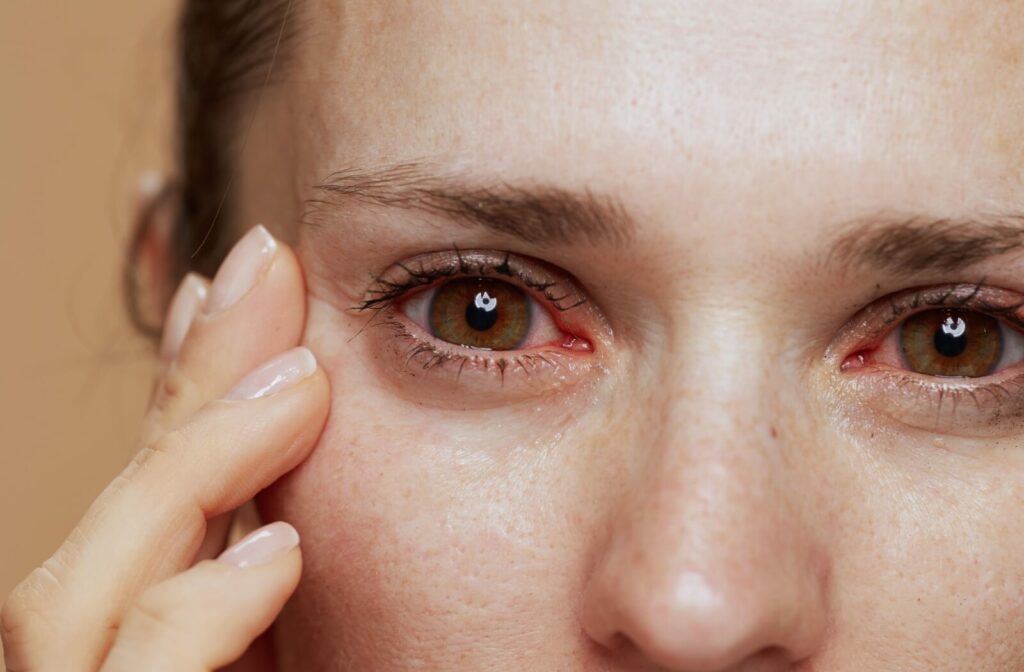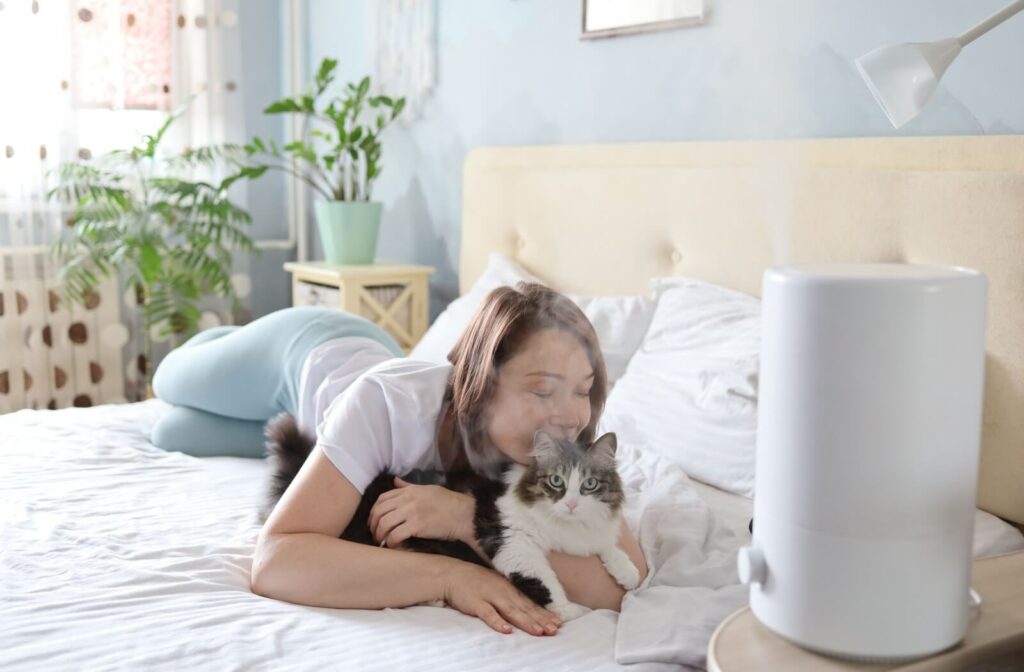While dry eyes are a common complaint among Canadians, living in the prairies means living in an environment with strong winds and dry air, which significantly contributes to irritating symptoms associated with dry eye. Though it might seem like a normal part of life, there are ways to reduce this discomfort.
One solution for dry eyes is to use a humidifier to add more moisture to your home’s air, which can help reduce the evaporation of tears. However, humidifiers may not work for everyone, so it’s important to understand how they impact your eyes to determine if a humidifier could benefit you.
How Does a Humidifier Impact My Eyes?
The gritty, red irritation that comes with dry eyes can be impacted by screen time, some medical conditions, and environmental factors, the latter of which humidifiers can combat.
Benefits of Using a Humidifier for Dry Eyes
Ideal humidity levels for our eyes range between 40-60%, but that can be difficult to achieve outdoors in the prairies, where strong winds bring dust and grit into the air. Utilizing a humidifier in your home or office can give you more control over indoor spaces, offering benefits such as:
- Improved eye hydration: This helps maintain the natural moisture balance in your eyes, reducing dryness and irritation.
- Enhanced sleep quality: Since our eyes can remain slightly open while we sleep, a humidifier can reduce morning redness.
- Improving tear film stability: A humidifier prevents tears from evaporating too quickly.
- Cleaner air: Humidifiers help eliminate dust, dirt, and other allergens found in the air that can irritate your eyes.
In addition to using a humidifier, treatments like IRPL therapy and meibomian gland expression can further improve tear film quality and alleviate dry eye symptoms by addressing underlying issues with the meibomian glands.
Additionally, humidifiers can also improve skin and sinus health by preventing dry skin and alleviating sinus congestion, contributing to overall well-being. They are non-toxic, safe to use, and portable, making it possible to move around from your bedside to your office desk.
Drawbacks of Using a Humidifier For Dry Eyes
While humidifiers can help with dry eye symptoms, they do not solve the root cause of dry eyes. Additionally, improper use of a humidifier can result in several drawbacks, including:
- Chemical use: Chemicals and other debris can be introduced into your air if tap water is used; distilled water is best used in a humidifier.
- Bacterial growth: Bacteria can grow in standing water (which causes eye irritation) if not cleaned regularly.
- Too much humidity: Over-humidification of the air can cause mould growth or exacerbate respiratory issues.
- Symptoms worsening: Symptoms may worsen or little to no improvement is seen with inconsistent use of a humidifier.
If you’re considering using a humidifier to alleviate dry eye symptoms, knowing these limitations and best-use practices is essential to getting the most out of your humidifier.
Is There a Best Type of Humidifier to Use For Dry Eyes?
If you’ve decided that humidifiers’ potential benefits are worth trying, you may be wondering if there’s a difference between types and which one can best help with dry eyes. If done right, investing in a good-quality humidifier can be worthwhile.
There are typically two types of humidifiers: warm-mist and cool-mist. Warm-mist humidifiers boil water to create steam, which removes bacteria and gives the produced mist a warm, soothing feeling on the skin. However, they may produce too much heat, making them less soothing for dry eye symptoms.
Cool-mist humidifiers, on the other hand, simply vaporize water as it passes through an air filter, resulting in a cool mist. In addition to soothing your eyes and skin, cool-mist humidifiers are safer to use around children and pets.
While a cool-mist humidifier is the better option for dry eyes, further humidifier features are dependent upon your personal preferences regarding:
- Humidity level control
- Water filter
- Noise levels
- Size
Small humidifiers typically cost between $15 and $45, but larger models that cover an entire room, offer both cool and warm mist options, or have an ultrasonic option (quiet and energy-efficient) can cost upwards of $100.
How Do I Know If I Have Dry Eyes?

Over half of all adults experience dry eye symptoms, so it can be challenging to understand when your eyes are just being affected by a gritty gust of wind or if your discomfort is more chronic.
Dry eye syndrome results from either your eyes not producing enough tears or your tear components being out of balance. Common symptoms include:
- A burning or gritty sensation
- Feeling like something is in your eye
- Fluctuating blurry vision
- Excessive watering
- Redness
- Dryness
Prolonged screen time, exposure to dry outdoor air or air conditioning, and some medications can also contribute to dry eye. Identifying the factors in your life that may impact your eye moisture levels can help with self-assessment. If you suspect you have dry eye, consult an eye care professional who can help determine the underlying cause of your symptoms.
Other Ways to Relieve Dry Eyes
While a humidifier can help alleviate dry eye symptoms, they do not remove the root cause. An optometrist can help you determine the best treatments, some of which can include:
- Artificial tears: These restore hydration to your eyes.
- Prescription drops: Prescription drops target specific symptoms and causes when over-the-counter eye drops aren’t sufficient.
- Punctal plugs: This refers to tiny devices implanted into your tear ducts that stop tears from draining too quickly.
- IRPL therapy: Uses light pulses to reduce inflammation and improve meibomian gland function. This non-invasive treatment can enhance tear film quality and provide lasting relief from dry eye symptoms.
- Meibomian gland expression: Applies gentle pressure to clear blockages and improve oil secretion from the meibomian glands. Regular expression can help maintain the health of your tear film and alleviate discomfort from dry eyes.
You can also combat dry eyes by improving your screen time (taking breaks to reduce eye strain), drinking plenty of water, and eating omega-3 fatty acids to support eye health.
Here to Help You See and Live Better
InVision Eyecare understands that dry eyes can be a nuisance, but they’re a nuisance you don’t have to deal with. Our comprehensive approach includes advanced treatments like IRPL therapy and meibomian gland expression to address the root causes of dry eye.
Contact us today to book an appointment to get relief from your dry eye symptoms.



